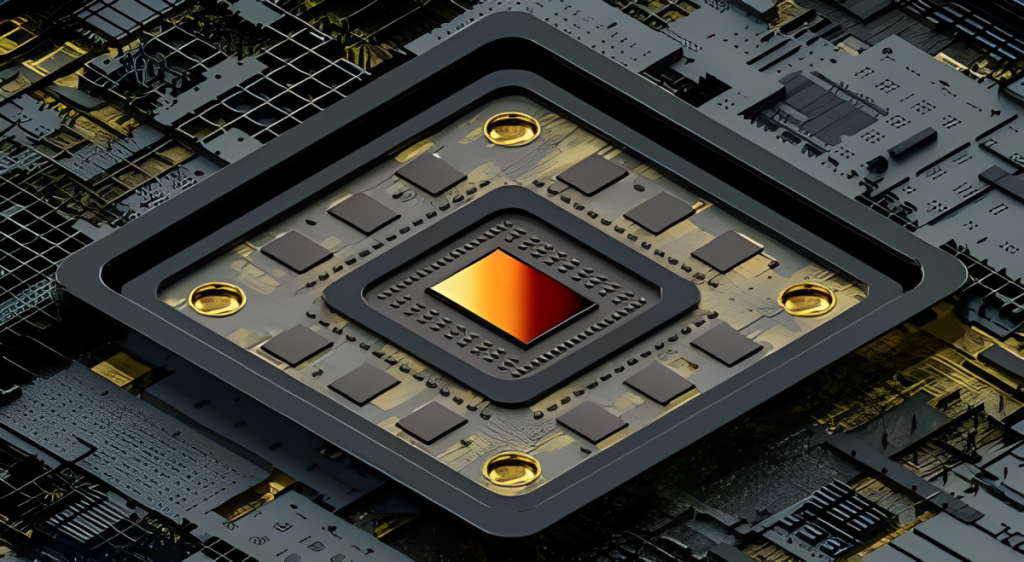Highlights:
- Qualcomm states that devices with the X80 will be able to download data at up to 10 gigabits per second.
- According to Qualcomm, smartphones sporting the X80 can connect to internet satellites as well as terrestrial 5G infrastructure.
Qualcomm Inc. unveiled 5G and Wi-Fi networking processors that will be included in smartphones to be released in the second half this year.
This week, the modules made their debut at the MWC mobile industry conference in Barcelona. Hardware functionalities that were absent in previous iterations of Qualcomm silicon are utilized, including support for satellite communications and onboard artificial intelligence software. An AI Hub, a collection of neural networks, is also being incorporated into a number of Qualcomm’s current chips to add new AI capabilities.
The inaugural product offering from the organization is the Snapdragon X80 5G Modem-RF System. It is a collection of semiconductors that can be utilized to add 5G connections to a mobile device. Handsets incorporating the X80 processor, as stated by Qualcomm, will have the capacity to download data at a velocity of 10 gigabits per second.
The tiny modem chip powers the module’s essential functions. The chip converts the ones and zeros that the onboard processor recognizes from the 5G radio signals that a phone’s antennae pick up. The modem on a mobile device also manages outgoing communications; it encodes text messages and other data into radio signals that may be wirelessly sent to the closest cell tower.
The modem of the Qualcomm X80 is comprised of a number of complementary components. In addition to six antennas for transmitting and receiving wireless data, an accelerator processor optimized for artificial intelligence is also present. The device, according to Qualcomm, improves the performance of the X80 in over half-dozen fundamental metrics, including latency, power efficiency, and speed.
Additionally, the chip controls the X80’s antennas. Carrier aggregation is a technique employed by the antennas to enhance the speed of 5G connections. It entails the distribution of radio signals across numerous frequencies. This method permits the transmission of multiple signals simultaneously as opposed to sequentially, thereby increasing the amount of data that can be transmitted per second.
According to Qualcomm, smartphones sporting the X80 can connect to internet satellites as well as terrestrial 5G infrastructure. Given the widespread use of the company’s processors in the Android ecosystem, this functionality may contribute to the expansion of satellite internet adoption. Since 2022, Apple Inc. has backed the technology; some iPhone functionalities are powered by Qualcomm chips.
Qualcomm’s Senior Vice President and General Manager of Technology Planning and Edge Solutions, Durga Malladi, said, “The Snapdragon X80 modem-RF system sets the stage for 5G Advanced and the era of intelligent computing everywhere.”
Recently, Qualcomm introduced the X80 in addition to the FastConnect 7900, a second wireless networking module designed specifically for mobile devices. However, in contrast to its predecessor, which was specifically engineered to facilitate 5G connectivity, the FastConnect 7900 is primarily intended for Wi-Fi networking. Additionally, the device is compatible with Bluetooth and Ultra Wideband, a specialized networking technology employed for purposes including the management of smart home appliances.
The maximum Wi-Fi download bandwidth supported by the FastConnect 7900 is 5.8 gigabits per second. Moreover, it consumes 40% less energy than products of previous generations. The performance and efficiency enhancements, according to Qualcomm, are partially enabled by AI software installed onboard that “adapts to specific use cases and environments.”
The chip can be used in conjunction with two new RF front-end modules that Qualcomm is releasing in tandem with handset manufacturers. The circuitry that interprets incoming radio signals—in this case, Wi-Fi signals—that a device receives is referred to as the RF frontend. Compared to Qualcomm’s silicon from the previous generation, one of the new modules is 50% smaller and uses half the power.
Javier del Prado, Vice President and General Manager of Qualcomm’s mobile connectivity group, said, “FastConnect 7900 is a technological feat, leveraging AI to raise the bar and deliver leading Wi-Fi 7 and Bluetooth capabilities while integrating Ultra Wideband all on a single 6nm chip.”
An additional machine learning software bundle called Qualcomm AI Hub completes the company’s announcement program for MWC. It consists of over seventy-five AI models that have been optimized for execution on the chipmaker’s processors. As of the previous year, Qualcomm has expanded its processor offerings to include smart vehicles, virtual reality handsets, personal computers, and smart phones.
Multiple expansive language models and AI image generators are housed within the AI Hub. In addition to various multimodal models, these neural networks also accept media files in addition to text as input. Qualcomm intends to augment the software bundle’s operating system support and incorporate additional AI models in the future.
The AI Hub neural networks establish communication with the Qualcomm processor that supports them through the AI Engine Direct SDK, a software interface. This feature empowers developers to modify the inference procedure to their liking, for instance, by designating which compute modules of a system-on-chip should execute a particular AI model. The software optimizes neural networks automatically in the background to enhance their performance.













